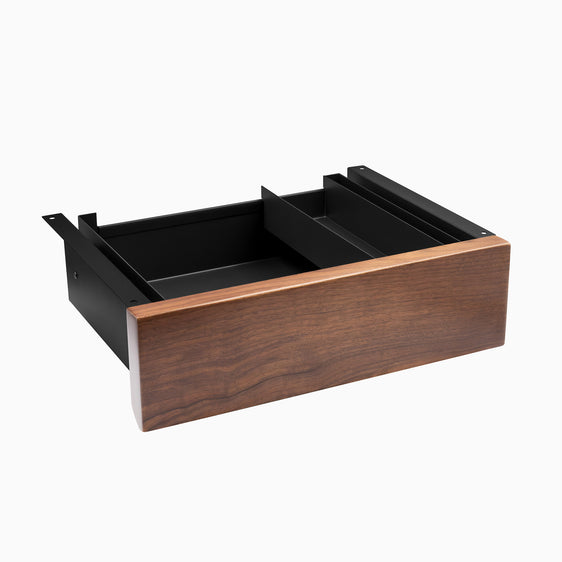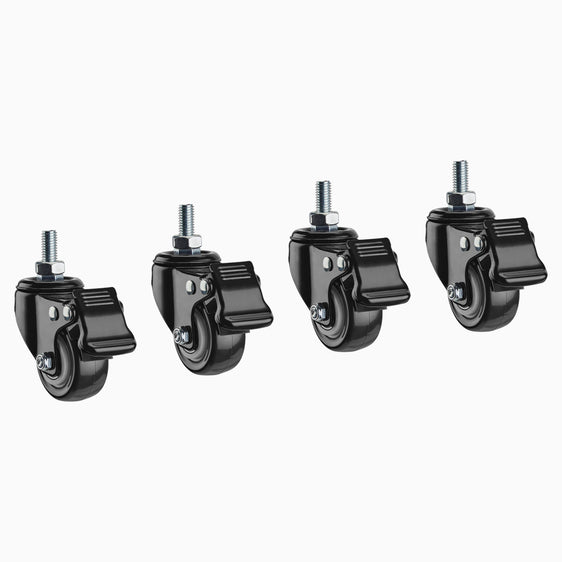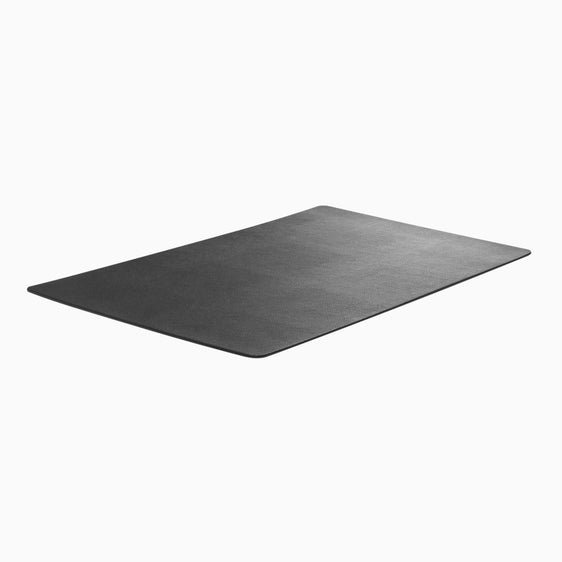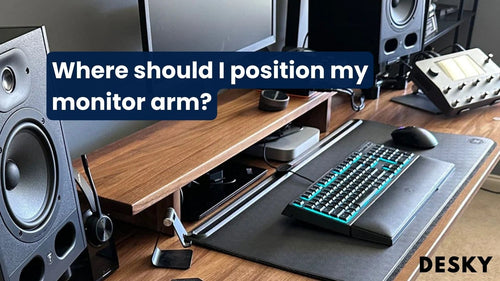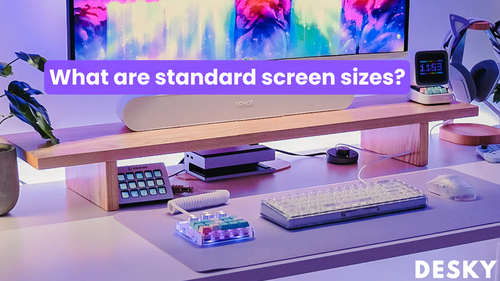
FAQ
Do anti-fatigue mats keep you off balance?
Hayden AdamsIt's natural to wonder if anti-fatigue mats could potentially disrupt balance, given their cushioned nature. However, renowned professor Taiar's studies suggest quite the contrary.
Evidently, anti-fatigue mats help improve balance by distributing pressure evenly across both legs. This counteractive feature allows a perfect 50/50 equilibrium, diminishing physical fatigue considerably.
Anti-Fatigue Mats For Comfort
Empirical studies have made it clear that comfort mats, such as standing gel mats or ergonomic matting, significantly mitigate fatigue associated with persistent standing, reducing it by about 50%. For individuals standing on hard surfaces like concrete, using a mat for standing on concrete can provide noticeable relief. Additionally, pairing these mats with anti-fatigue shoes can further enhance comfort and reduce strain during long hours of standing.
Furthermore, utilizing these anti-fatigue standing mats lessens the chance of joint pain, cardiovascular disease, varicose veins, and other issues during pregnancy. Thanks to their textured surfaces, anti-fatigue mats ensure steadfast footing, deterring any inadvertent sliding.
Do Anti Fatigue Mats Actually Work?
Scientific studies have shown the effectiveness of anti fatigue mats. The use of such mats, as opposed to standing on a standard rigid surface, can significantly lessen lower back pain, indicating the meaningful impact that they can have on overall health. Individuals experiencing lengthy periods of standing at their workspace can greatly benefit from incorporating anti-fatigue mats, available at Desky®'s Standing Desk Mats Collection.
{{ spec_anti_fatigue_mat }}
Benefits of Anti-Fatigue Mats
Anti-fatigue mats are designed to alleviate pressure on our muscles and joints during extended standing periods, making them effective support mats for standing. Their soft and responsive surface helps reduce strain, while their textured surface promotes subtle movement to further alleviate discomfort. Among the notable anti-fatigue mat benefits are improved comfort, reduced fatigue, and enhanced circulation. However, understanding the pros and cons of anti-fatigue mats is important, as factors like cost and the potential for tripping if not secured properly should also be considered.
Here are some ways anti-fatigue mats provide comfort:
- Reducing excessive pressure on muscles and joints
- Encouraging slight movements due to their texture
- Decreasing physical fatigue with a cushioned surface
Are Anti-Fatigue Mats Bad for Your Back?
Contrary to this notion, evidence points towards anti-fatigue mats working to alleviate back pain rather than causing it. For those wondering, how do anti-fatigue mats work, their slightly sloped and soft texture encourages subtle movements, which help engage muscles and improve circulation, effectively reducing strain on the lower back. While some may question, do anti-fatigue mats keep you off balance, these mats are designed to promote stability while fostering small movements that minimize discomfort during prolonged standing. Standing for hours can intensify back problems, making these mats an effective solution for reducing lower back discomfort.
The increase in movement triggered by these mats could likely explain this benefit. So, not only do these mats provide comfort, but they also play a role in alleviating chronic back pain.
Do Anti Fatigue Mats Impact Balance?
According to Prof Taiar’s research, anti-fatigue mats boost balance and evenly distribute pressure between your legs, crediting these attributes to the mats’ soft surface.
Evidence suggests a 50/50 balance restoration, significantly curtailing physical weariness. Hence, anti-fatigue mats not only give relief against standing fatigue but also help maintain your body balance.
{{ spec_ball_mat }}
Effectiveness Of Standing Pads
Undeniable is the effectiveness of standing pads. With every minute spent standing while working, the advantages of having a supportive mat under your feet become more pronounced.
These mats provide not only immediate comfort but also significantly contribute to long-term wellness. A study confirms the benefits of using anti-fatigue mats for optimal support while standing.
Immediate Comfort and Long-term Benefits
- Enhanced comfort while standing
- Reduced impact stress on the joints
- Contributions towards long-term overall health
How Standing Mats Help

Standing mats do more than just provide comfort. Their prime function is to offer a cushioned barrier capable of absorbing the pressure exerted on the feet, ankles, legs, and joints during prolonged standing sessions at work. This effect, according to research findings, can substantially diminish lower back pain.
When comparing an anti-fatigue mat with a traditional rigid surface, there's a clear difference in the level of strain and pain experienced. Combine these with the correct use of standing desks and you have a powerful combination that can greatly improve overall health and productivity in the workplace.
Alleviating Foot Pain With Mats
For foot pain sufferers, your solution may lie within the soft embrace of an anti-fatigue mat. These mats, which are normally constructed with a dense foam core, act as a supportive cushion, reducing foot and back pain.
They also encourage better posture, reducing fatigue and discomfort. Features such as waterproofing, bevelled edges, and a nonslip base add an extra layer of safety, minimising trip hazards and slips.
Disadvantages of Anti-Fatigue Mats
As with anything, anti-fatigue mats come with a few drawbacks as well. When considering what are the disadvantages of anti-fatigue mats, the primary concern arises from the hazard posed by improper placement, as unsecured mats could lead to potential tripping. Additionally, some mats may require regular maintenance to prevent wear and tear, which could affect their effectiveness over time.
Ensuring correct installation and placement can mitigate this risk. The mats offer superior shock absorption, reducing foot fatigue, but the need for cautious usage is paramount to avoid any mishaps.
Best Type Of Anti Fatigue Mat
For superior body support and optimal comfort, highly recommended anti fatigue mats incorporate excellent quality, durability and effectiveness. Manufacturer’s proprietary techniques are used to ensure that these mats reduce strain on the feet, knees, legs and backs, thereby enabling improved work productivity and optimal comfort. You can find more about these features in Desky Anti-Fatigue Rectangle Standing Mat.
Best Floor Mat for Standing All Day
Mats designed for all-day standing are also available on the market. Often referred to as stress relief mats or anti-stress mats, these products are widely used on job sites where employees depend on them to comfort their feet. For those wondering, do anti-fatigue mats really work, the answer lies in their ability to reduce strain, improve posture, and provide a cushioned surface that minimizes discomfort during prolonged standing. Such mats should possess notable durability, sufficient thickness, and ample cushioning. In terms of material, mats made of polyurethane or rubber are often recommended as they provide excellent support and resilience.
Optimal Thickness For Standing Mat
When selecting a standing mat, elasticity is important, yet you should avoid excessively soft mats that might lead to instability or discomfort. Rather, a balance between softness and firmness is the key.
Cheap mats will commonly range between 1/4″ and 3/8″ in thickness and provide minimal comfort. Semi-decent mats will measure about 5/8″ thick. However, mats with a thickness of 3/4″ stand as the cream of the crop, providing substantial comfort and support for prolonged standing.
Gel vs. Foam Anti Fatigue Mats
The choice between gel-based or foam-based mats typically depends more on each individual’s requirements and preferences, according to Al Shelley, Marketing Director at SATECH, Inc.Foam types often become increasingly more rigid over time, limiting the degree of cushioning effect.
In contrast, while gel floor mats remain considerably softer, their structures may allow for extreme squishiness, potentially failing to provide the needed level of support.
By evaluating the level of compressibility and softness required, customers can make the most suitable choice for their workspace.
Conclusion
In a nutshell, anti-fatigue mats are specifically designed not only to reduce physical fatigue but also to maintain and correct balance during prolonged standing periods.
While they may pose minimal risk if not installed properly, the advantages of their use, such as alleviation of back pain and decrease in muscular pressure, arguably outweigh these concerns. Simply put, these mats are a valuable addition to your workspace for a more comfortable and productive work environment.


